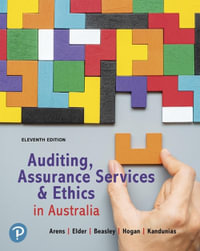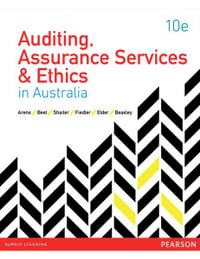| Acronyms | p. viii |
| Useful websites | p. x |
| Foreword | p. xii |
| Preface | p. xiv |
| Government and the public sector in Australia | p. 1 |
| Introduction | p. 1 |
| Defining the public sector | p. 1 |
| The significance of government | p. 6 |
| Accountability: the defining characteristic of democratic government | p. 12 |
| Constitutional sources of financial accountability | p. 15 |
| Threats to financial accountability | p. 21 |
| Performance accountability | p. 26 |
| The structure of Australian governments | p. 28 |
| Conclusion | p. 41 |
| Accountability in the Australian public sector | p. 42 |
| Introduction | p. 42 |
| The chain of accountability | p. 43 |
| Definition of accountability | p. 47 |
| Dimensions of accountability | p. 51 |
| Regularity and legality | p. 53 |
| Economy | p. 54 |
| Efficiency | p. 55 |
| Effectiveness | p. 63 |
| Ethical performance and a fair society | p. 65 |
| The myths of Westminster accountability | p. 68 |
| Conclusion | p. 78 |
| The institutional framework of accountability | p. 79 |
| Introduction | p. 79 |
| Departments | p. 80 |
| Statutory authorities | p. 83 |
| Government business enterprises | p. 86 |
| Institutions of public sector accountability and financial control | p. 89 |
| Conclusion | p. 109 |
| Accountability for performance: managerialism in the public sector | p. 110 |
| Introduction | p. 110 |
| The contested terrain of public sector reform | p. 111 |
| Public sector management: legacy and reform | p. 113 |
| The influence of the private sector and the intoxication of competition | p. 117 |
| Theoretical foundations of reform | p. 121 |
| Three decades of Commonwealth public sector management reform | p. 125 |
| Financial Management Improvement Program (FMIP) | p. 132 |
| Outcomes and Outputs Framework | p. 134 |
| Personnel reforms | p. 141 |
| Financial management reforms in New South Wales | p. 144 |
| Competitive service delivery | p. 147 |
| Conclusion | p. 153 |
| Accounting for performance | p. 157 |
| Introduction | p. 157 |
| The role of management accounting | p. 159 |
| Management control | p. 163 |
| Costs | p. 169 |
| The qualitative dimension to costs and the balanced scorecard | p. 180 |
| Planning | p. 183 |
| Conclusion | p. 192 |
| The basis of public sector accounting | p. 193 |
| Introduction | p. 193 |
| Accounting and accountability | p. 194 |
| The genesis of cash-based accounting | p. 198 |
| Government accounting in Australia | p. 204 |
| Cash-based accounting | p. 210 |
| Accrual accounting | p. 213 |
| The relative merits of cash and accrual accounting | p. 214 |
| The adoption of accrual accounting | p. 226 |
| Accrual budgeting | p. 231 |
| Conclusion | p. 240 |
| The preparation of public sector financial statements | p. 241 |
| Introduction | p. 241 |
| The budget process | p. 241 |
| The NSW budget | p. 249 |
| Public sector financial statements | p. 253 |
| Financial statements of NSW budget-dependent agencies | p. 277 |
| Whole-of-government financial reports | p. 286 |
| Conclusion | p. 296 |
| Critical issues in the implementation of accrual accounting | p. 297 |
| Introduction | p. 297 |
| Overview of implementation problems | p. 297 |
| Implementation costs | p. 301 |
| Acceptance of an accrual culture | p. 306 |
| Consolidation accounting | p. 310 |
| Measurement/valuation of public sector assets | p. 314 |
| Further issues | p. 328 |
| Accrual-based appropriations | p. 347 |
| Conclusion | p. 351 |
| Public sector audit | p. 354 |
| Introduction | p. 354 |
| The Commonwealth Auditor-General | p. 355 |
| NSW Auditor-General | p. 374 |
| Internal audit | p. 377 |
| Conclusion | p. 379 |
| Public sector accountability in the 21st century | p. 381 |
| References | p. 387 |
| Index | p. 395 |
| Table of Contents provided by Ingram. All Rights Reserved. |
























